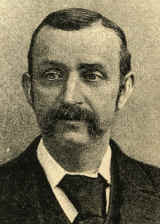|
The history of water polo began as a demonstration of one's strength and swimming skill in late 19th century England and Scotland, where water polo and swim racing were a feature at the county fairs and festivals. Men's water polo was one of the first team sports introduced to the modern Olympic games in 1900. Water Polo is now popular in many countries around the world, notably Europe, Australia, Canada, and the United States.
One of the earliest recorded modern games of Water Polo was when a game of water "hand-ball" was played at Bournemouth on July 13, 1876. This was a game that involved 12 members of the Premier Rowing Club, with the goals being marked by four flags placed in the water near to the midpoint of the Bournemouth Pier. The game was said to have started at 6:00 p.m. in the evening and only lasted for 15 minutes due to the ball bursting. The game was watched by a large crowd. It was said that there were plans being made for play on a much larger scale the following week. The rules of water polo were developed in the late nineteenth century in Great Britain by William Wilson. Wilson was believed to have been the First Bath Masters of the Arlington Baths Club. The first games of water polo were played at the Arlington in the late 1800s, with a ball that was constructed of India rubber. Water Polo came to be called water polo based on the English pronunciation of the Balti word for ball, pulu. Early play of the game allowed brute strength, wrestling, and holding opposing players under water to steal the ball. The goalie also stood outside of the designated playing area and defended the goal by jumping on any opposing player attempting to score by placing the water polo ball on the deck. |
Water Polo - (555)-594-9458 or (888)-594-9458
| Home | History | Overview of Game Play | Positions | Rules | Equipment |
| Home | History | Overview of Game Play | Positions | Rules | Equipment |

